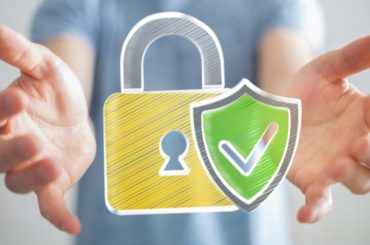If you suspect or know that you are in an abusive relationship, it is important to remember three things: you are not alone, it is not your fault, and abuse of any kind is never excusable.
This guide will help you to understand:
- what constitutes abuse
- the different kinds of abuse
- how to build a support system
- the steps to take to address the abuse or leave the abuser
If you or your family are in immediate danger, call 911.
Identifying Abuse
The first step in preventing, coping with, and eliminating abuse is to first identify what types of behaviors are considered abusive.
Physical abuse is typically quite easy to identify. It can include a variety of actions like hitting, kicking, biting, scratching, shoving, grabbing, burning, slapping, restraining, and throwing things, among others.
Emotional abuse, sometimes referred to as psychological aggression, can be harder to point out as there is typically no physical evidence of the abuse. A few of the more obvious forms of emotional abuse are yelling and threatening but emotional abuse extends far beyond that.
Many times, emotional abuse can also be much more subtle. For example, constant name-calling, humiliation, and belittling can all be considered emotional abuse. If an individual willfully limits their partner’s access to transportation, money, family, and friends, they are also committing emotional abuse by exerting coercive control.
What’s more, some abusers falsify, downplay or deny events, conversations, or actions in order to make their partners question their own sanity. This is a manipulation technique called “gaslighting” and is also considered a form of emotional abuse.
Understanding Abuse
In the cases of both physical and emotional abuse, the end goal of the abuser is to gain control over their partner.
Oftentimes, your partner may try to make it seem like their abusive behavior is your fault, that they had no choice. Regardless of whether they actually believe this or if they are using it as a manipulation tactic, the truth is that no one ever, in any relationship, deserves to be abused.
They may even go out of their way to be especially kind after an abusive event or express guilt, only to later begin the abuse again. This is referred to as “the cycle of abuse”, which can be broken down into four stages:
- Tension Building – tensions increase, communication breaks down, victim feels fearful
- Incident – physical and emotional abuse, anger, blaming, arguing, threatening, intimidation
- Reconciliation – abuser apologizes, gives excuses, blames victim, denies that the abuse ever occurred or trivializes it
- Calm – incident is “forgotten”, no more abuse, “honeymoon” phase

After the “calm” stage though, the cycle begins again as tensions start to build up. That’s why it’s important to address abuse as soon as possible. Otherwise, the cycle will continue, leading the victim into a false sense of hope that the relationship will ever change.
Identifying Emotional Abuse in Your Relationship: A Checklist
Emotional abuse can be difficult to identify and victims may not even realize that abuse is taking place. The following is a checklist provided by the National Coalition Against Domestic Violence to help you identify if you are in an emotionally abusive relationship.
Does your partner:
- Embarrass or make fun of you in front of friends or family? Put down your accomplishments or goals?
- Make you feel like you are unable to make decisions?
- Use intimidation or threats to gain compliance?
- Tell you that you are nothing without them?
- Treat you roughly – grab, push, pinch, shove, hit, choke, or burn you?
- Threaten or abuse your pets?
- Call you several times a night or show up to make sure you are where you said you would be?
- Use drugs or alcohol as an excuse for saying hurtful things or abusing you?
- Blame you for how they feel or act?
- Pressure you sexually for things you aren’t ready for?
- Make you feel like there “is no way out” of the relationship?
- Prevent you from doing things you want, like spending time with your friends or family?
- Try to keep you from leaving after a fight, or leave you somewhere after a fight to “teach you a lesson?”
Do you:
- Feel safe at home?
- Sometimes feel scared of how your partner will act?
- Constantly make excuses to other people for your partner’s behavior?
- Believe that you can help your partner change if only you changed something about yourself?
- Try not to do anything that would cause conflict or make your partner angry?
- Feel like no matter what you do, your partner is never happy with you?
- Always do what your partner wants you to do instead of what you want?
- Stay with your partner because you are afraid of what your partner would do if you broke up?
If you recognize any of these situations happening in your own relationship, reach out to someone you trust or call the National Domestic Violence Hotline – 1−800−799−7233 or TTY 1−800−787−3224.
Abuse in a Relationship
Abuse in a relationship, also called intimate partner violence, is a serious issue and can be extremely damaging to both an individual’s sense of physical safety and their emotional well-being.
According to the World Health Organization, there are two major types of abuse: physical (which can be broken down to physical violence and sexual violence) and emotional (further categorized as psychological abuse and controlling behaviors).
Both physical and emotional abuse is more common than most people think. Intimate partner physical violence, for example, has been estimated to occur as frequently as nearly 20 incidences per minute (National Coalition Against Domestic Violence [NCADV]) on average.
As emotional abuse is reported far less frequently, it is difficult to gauge just how common this type of abuse really is. Many experts agree, however, that emotional abuse is even more widespread than physical abuse.
Although the wounds created by emotional abuse can’t be seen, that doesn’t mean it is any less damaging. In fact, emotional abuse may be even more destructive as it can turn the victim against themselves.
Additionally, what starts out as emotional abuse can often lead to physical abuse. That’s why it’s important to recognize the signs of abuse before they intensify.
In What Kinds of Relationships Does Abuse Occur?
Contrary to what some people may think abuse is not just between a man and a woman. Instead, abuse can be found in any type of relationship, whether it be a heterosexual relationship or a homosexual relationship. Men can also be physically and emotionally abused as well.
In addition, intimate partner violence (both physical and emotional) occurs in relationships regardless of social, economic, educational, religious, or cultural background. It also happens in every country around the world.
Abuse can also occur in just about any type of relationship, such as between family members, bosses and employees, clergy and parishioners, friends. Recognizing it and finding a way to deal with it is the healthiest approach in an abusive situation.
No one deserves to be hurt. You deserve to be safe at home.
Healthy Relationships: An Example
Many victims of intimate domestic violence don’t take steps to end their abuse. In fact, many don’t even admit to themselves that it’s abuse at all.
Part of the reason is that many victims feel that they actually deserve this type of treatment. Many victims of domestic abuse also tend to be younger and may not know what a healthy relationship actually looks like. They also may not know how to support themselves if they were to get out of the relationship.
Below is a list of characteristics that constitute the values a healthy relationship is built on and describes the type of relationship that everyone deserves.
- There is no abuse, either emotional nor physical
- Both partners are able to handle conflicts without threats or despair
- Both partners willingly share their wants and needs without feeling shame
- Both partners feel the relationship is nurturing and comfortable
- Both partners are willing to hear feedback and do not lash out after receiving criticism
- Both partners feel comfortable saying “no” to requests and openly communicate if they feel hurt or uncomfortable
- Neither partner fears the other
These are qualities that exemplify the type of relationship that everyone deserves. If your partnership does not exhibit these characteristics or if you feel uncomfortable approaching your partner about working on any of these areas, you may be in an abusive relationship. Most relationships experience conflicts and arguments at some point, but it’s how those situations are handled that differentiates a healthy relationship from an abusive relationship. In a healthy relationship, communication typically leads to resolution without physical violence or emotional scars left behind. In an abusive relationship, conflict can lead to physical and/or emotional abuse.
Getting Help
Once you’ve identified your relationship as abusive, the next step is to reach out for help. Isolation is one of the biggest factors in why a victim does not leave an abusive relationship. They may feel like they cannot make it on their own, they have nowhere to go or believe they do not deserve to be happy.
Creating and maintaining a support system of friends and family is incredibly important in dealing with these fears. They will not only help you gain an outside perspective on what kinds of relationships are healthy, but they will also give you the support you need to take action against your abuser. This can come in the form of emotional support, financial support, or simply a place to stay after leaving.
Victims of abuse should also reach out to professional services for help by calling one of these 24-hour hotlines. They can provide you with resources in your area to help you evaluate your situation and form an action plan. They may also provide access to free services specifically for victims of domestic abuse such as childcare, temporary housing, job training, and legal aid.
National Domestic Violence Hotline – 1−800−799−7233 or TTY 1−800−787−3224
National Teen Dating Abuse Helpline – 1−866−331−9474 or TTY 1−866−331−8453
These resources can also help you find relationship counselors that may offer the chance for you and your partner to discuss the abuse in a safe environment under the guidance of a professional.
Leaving an Abuser
If you decide to leave an abusive relationship, you should prepare a safety plan since doing so may be dangerous, depending on the degree of abuse. The most important thing to consider is your safety (and your children’s safety if applicable). A violent abuser may become even more violent after separation.
Here are a few things to do before leaving your abusive partner:
- Make a checklist of important items to take with you, and your children if applicable. In addition to the essentials (money, clothes, cell phones, medicine, cash or credit cards, children’s favorite toys, etc.), you should also be sure to bring any important documents like marriage or divorce papers, health insurance documents, and work permits.
Use this Safety Packing List provided by WomensHealth.gov to ensure that you have everything you need before leaving.
- Be sure to carry a cell phone with you at all times. If possible, use a prepaid cellphone that the abuser does not have access to. Contact a domestic abuse hotline for more information as some domestic abuse shelters offer free prepaid cellphones.
- Create a code word between your friends and family that lets them know you are in danger.
- Do not use social media (Facebook, Instagram, etc.) as this may give the abuser information about you plans or your location.
- Keep extra car and house keys outside of your home in case you must leave in a hurry. Keep a packed bag for you, and your children if applicable, with someone your trust.
- Find somewhere safe to go. Whether it be staying with a friend or family member or a domestic abuse shelter, make sure that it’s somewhere you’ll be safe if your abuser tries to find you.
- Contact a domestic abuse hotline for help in getting a court order of protection. They can help you find a lawyer who may work for free to legally represent you.
- Teach your children how to call 911 and where they should go if they are scared.
Finding More Information
Anyone looking to find more information on coping with physical or emotional abuse should use the resources listed below or use the search terms “domestic abuse”, “intimate partner violence”, or “relationship abuse”.
Resources
National Domestic Violence Hotline – 1−800−799−7233 or TTY 1−800−787−3224
National Teen Dating Abuse Helpline – 1-866-331-9474 or TTY 1-866-331-8453
National Coalition Against Domestic Violence (NCADV) – www.ncadv.org
Centers for Disease Control – Intimate Partner Violence – https://www.cdc.gov/violenceprevention/intimatepartnerviolence/
Resources by State – https://www.womenshealth.gov/violence-against-women/get-help-for-violence/resources-by-state-violence-against-women.html




